avocado overview please......
I have the opportunity to plant an avocado tree. An old neighbor has sold her house and the new buyer removed many of the pine trees, thus opening up portions of my yard to sunlight and space.
My questions would be:
1. Is it true that 2 avocado trees are needed for pollination (which info I read in Sunset Garden Book). Or are avocados self-pollinating (which a nurseryman told me yesterday).
2. Guatamalen vs. Mexican? I am 40 miles south of San Francisco. Go below 32 degrees a few nights a year. The "Haas" variety sounds like the best fruit, but it is a Guatamalen variety, which variety is not as cold-hardy as the Mexican. Correct? Any suggestions on varieties for my area?
Any advice proffered is appreciated.
My planting site is protected from wind, gets full sun from morning til 3 o'clock, and is on raised ground which should drain very nicely.
Thank you.
p.s. I love avocados.
Comments (34)
gardenguru1950
18 years agolast modified: 9 years agoWHAT AVOCADOS NEED:
very much as citrus...
Full sun
Relatively frost-free location
Out of strong wind
deep, well drained soil
lots of water during active growing periods; little at other times (very occasional DEEP soaking)
Avocados do better than citrus in sandy loam
Avocados are more prone to wind damage than citrus
Trees are bigger, usually MUCH bigger than citrus
POLLINATION
Avocado flowers appear in January - March before the first seasonal growth.
Two types of flowers:
those receptive to pollen in the morning and shed pollen the following afternoon (type A),
OR those receptive to pollen in the afternoon, and shed pollen the following morning (type B).
Consequently, production is best with cross-pollination between types A and B.
This is theoretical, of course. In areas where avocados do well, there are usually plenty of trees nearby to pollinate your own (if you know the predominant flower type in your area, choose the opposite for most success).
Also note that some cultivars bloom and set fruit in alternate years.
PLANTING
Two or three trees can be planted in a single large hole to save garden space and enhance pollination. BUT DO NOTE the cultivar characteristics and plant trees of similar habit.
Also, when planting, keep in mind that the roots are strong and highly competitive and will choke out nearby plants. They can even raise pavement with age.
The shade under the trees is too dense to garden under and the constant litter can be annoying. Dont plan on planting a garden under or too near avocados
FERTILIZING
Avocados can be fed as you would citrus, including using citrus food. Three feedings: 1) Feb-Mar, Apr-May, Jun-July.
Avocados suffer from leaf tip burn and stunting of leaves because of salts in the soil -- which come from hard water
and commercial fertilizers.Deep irrigation will help leach salt accumulation.
Yellowed leaves (chlorosis) in young and old trees indicate iron deficiency and mature trees often also show a zinc deficiency. Both can be corrected by a foliar spray of something containing iron and/or zinc.
MULCHING
Avocados very much like a mulch of their own leaves.
PRUNING/TRAINING:
Columnar cultivars require pinching at early age to form a rounded tree. Others need no special training.
BEST CULTIVARS (not complete)
In mild-winter, cool summer areas --
Bacon (tolerates cold) A
Haas A
Mexicola (tolerates cold) A
Zutano BBetter where Warmer (but not inland)
Gwen (Dwarf) A
Nabal B
Pinkerton A
Reed A
Wertz (Dwarf; "Littlecado") A
Witsell (Dwarf) BJoe
avorancher
18 years agolast modified: 9 years agoJoe's summary is as good as it is comprehensive.
Avocados flowers on each tree are both male and female, either type A or B as Joe describes. An mature tree has nearly a million flowers, therefore there are times during the day when the flowers overlap... no matter which variety you have. They don't all open and close at exactly the same time. The flowers will generally pollinate each other, especially is there is a wind or moisture in the air during these mid-day periods. Honey bees also help will pollination. With so many blooms, you only need a small percentage to set fruit to enjoy a good crop.
Even commercial growers like myself (4000 Hass trees), argue over whether having type A and B trees are necessary. There seems to be research to support both sides. Personally, I have taken out all type B and have seen no difference in the setting of fruit. Trees generally set a lot more fruit than they can carry and a discouraging mid-summer fruit drop happens as the tree thins itself to the appropriate level for its size and health.
Young trees are sensitive to cold and a freeze can kill them off. Fuerte variety, as well as some other Mexican varieties, can tolerate minor freezes but can still be killed off if not healthy and irrigated properly.
I'm not a great fan of having avocados in a yard due to many of reasons Joe stated (lots of litter and heavy irrigation requirements, as well as being a very large tree when mature), but I understand how tempting it is to have your own supply. Also note that the leaves and stems are poisonuous to many animals.
Be prepared to irrigate heavy. For instance, to maximize production, we put nearly 400 gallons of water a week on each tree, which can get quite expensive for a homeowner.
I hope I don't sound too negative... I love our trees and have been known to hug them on occasion. :-)
Related Professionals
Fitchburg Landscape Architects & Landscape Designers · Winder Landscape Architects & Landscape Designers · Doctor Phillips Landscape Contractors · Fair Lawn Landscape Contractors · Kettering Landscape Contractors · Lorain Landscape Contractors · Lynn Landscape Contractors · Miller Place Landscape Contractors · Rockville Landscape Contractors · New Carrollton Landscape Contractors · Atlantic Beach Window Contractors · Central Islip Window Contractors · Damascus Window Contractors · Palm River-Clair Mel Window Contractors · Pleasant Grove Window Contractorsdeep___roots
Original Author18 years agolast modified: 9 years agoThank you both so much.
My property is larger than most, and my chosen planting location is a good 25 yards in back of the formal garden, well screened by a large Monterrey Pine. I can see that I will need another length of hose for watering though.
I will go with just one tree. Wish me luck. Hope to be hugging my tree soon.
avorancher
18 years agolast modified: 9 years agoYes, Fuerte would be my second favorite variety. It is a good choice if the area is prone to frost or near frost conditions. Fuerte means "strong" in Spanish and that variety was named after it survived a huge California freeze in 1913. They were the most popular variety in California until Hass gradually replaced them in the last 15 years.
Hass is by far the most marketable as it has high oil content, nutty taste, and transports well due to its thicker skin. It is also easy to tell when ripe because it turns dark. Fuertes remain green when ripe.
In a backyard orchard, you should be concerned about taste rather than economics. Go to the local farmers market and see if they have varieties for tasting. Some people prefer the Fuerte.
I have a number of trees that were Fuerte, then grafted to Hass so I know that both can grow on the same rootstock. The only problem planting more than one to a hole is that they will compete for sun and the shaded avocado branches die off quickly.
quiltart
18 years agolast modified: 9 years agoI am not sure if I should start a new thread so if I should just let me know. When I was a little kid we would take the pit out of our avocados, stick toothpics in the sides and put them in a glass of water. The seed would sprout and we would watch them develope into little trees. OK, I am 50 now and I would like to show the neighbor kids how to do this, :-) but every seed/pit I have tried will not sprout.
Have the pits changed? Did I forget something that I should be doing? We cannot grow them here, outside, but they are so fun to watch when they are growing roots in the water I thought other kids should get to see it too.
Any help would be very much appreciated.
avorancher
18 years agolast modified: 9 years agoWater has changed, kids have changed, but avocados? (perhaps the variety changed). The technique worked for me a couple years ago.
Try this link.
joanwi_cox_net
18 years agolast modified: 9 years agoWe have a 3 year old Haas Avocado tree, that doesn't seem to have grown since we've had it. It's apx 8 ft tall. Some of the leaves are brown/black on the ends. It has lots of growth that's just started, but we've had frost the last couple of nights and I'm worried that I'll loose what is beginning to grow. (they may be buds- which would be a first)
Anyway, does anyone have any suggestions as to what I need to do to help this tree along? Thanks in advance....Joanavorancher
18 years agolast modified: 9 years agoIt would be normal to see some brown, dried edges at this time of year on the older leaves which will be replaced during the spring flush of growth you are seeing. Hass trees are sensitive to frost, so you'll have to wait and see if the new growth continues. If the frost was light they will most likely recover... but they are tropical trees and frost is a bad thing. It usually takes several hours of 26F cold to kill them off completely. Some other varieties are more hardy.
If it starts to wilt, you can prune it heavily back to good wood and see if that helps... but give it some time first because new growth often makes the old growth look wilted by pushing down the existing leaves. Trees often look their worst just before a growth spurt.
You stated that it hasn't grown much in 3 years, so there may be other factors. An originally 8 foot Hass tree should be 16 ft. tall and starting to bear small numbers of large fruit within 3 years.
deep___roots
Original Author18 years agolast modified: 9 years agoHey! I started this thread!
Anyways, here's an update: I have decided on planting 2 trees (I only need 3099 more trees to overtake Avorancher!) and I have purchased them.
MEXICOLA: I have had this for over a month now and it has not minded our recent cold weather snap. I believe this is a smaller sized tree than
FUERTE: which I purchased yesterday at a big box store for 19.00 bucks....couldn't resist.I have one planting hole prepared and will likely plant one tree this weekend. Both of these varieties hopefully will do well in Northern CA.
Thanks for all the info. Wish me avocados eventually. Cheers.
avorancher
18 years agolast modified: 9 years agoCongrats.... sounds like a good plan. Plant the crowns a bit higher than ground level and don't dig the hole too deep because the dirt will settle. All varieties are shallow rooted, so don't cultivate or mow around the trees.
I protect the graft union with a loose cardboard tube or paper wrap for the first year. I don't use any soil amendments in the hole but topdress with compost, then mulch heavily with a coarse mulch to let water in and retain it.
One more person who won't be buying my harvest! :-(
patty4150
18 years agolast modified: 9 years agoQuiltart -
We used to do the same, and can't get it to work anymore either.
But! An avocado volunteered for us from the compost. I'm nursing it along - but after reading the amount of water that they need, I may decide against planting it in the ground. It's in a pot at the moment.
Question: Is it true that Avocados should be grafts to get the best flavored fruit?
drtyson
18 years agolast modified: 9 years agoI have a dwarf avocado (not sure of the cultivar) all by its lonesome in my small wind-protected backyard in Southern California. I've had it now for 5-6 years, and it has flowered now for the last two years in a row. Unfortunately, still no fruit. Right now there are blooms everywehere, but none seem to be setting. Is there anything that I might do to enhance the setting or do I just need to hope for the best?
jmay2174
18 years agolast modified: 9 years agoAvocados self-pollinate when they are growing in a similar climate to where they originally grew. If it were my tree, I would wait until the flowering has stopped and then, If no fruit has set, I would do the following.
Severely cut back the tree to about 4 to 5 feet. Plant one "A" and one "B" variety a foot or two from the original tree. Keep the original tree trimmed back for a year or two to allow the new trees to take hold. As the trees mature, keep them trimmed to a height that allows you to pick all the fruit.
You don't say what area your are located, so I can't recommend a varieties, but I would choose ones that have different harvest dates to spread out your fruit availability.Joel
Arizona Chapter
California Rare Fruit Growersbfreeman_sunset20
18 years agolast modified: 9 years agoI think I know why your seeds wont sprout. Avocados nowadays are often stored refridgerated for 6 months hard. This would surely kill the pit. -Brendan
meadesd
18 years agolast modified: 9 years agoOk this is the deal. First off, I think I'm in a good location for growing both Citrus and Avocado. I live in San Diego between Lemon Grove and San Diego State. The back yard is graded to about 20ft back and then there is a 4ft retaining wall that goes across the length of the property (about 50 ft). When we purchased the house in 03 there was Brazilian Pepper on the back of the retaining wall that created a 25f high and 50ft wide screen of the back. In fact you couldn't even see the retaining wall. Well I did what every gardener/homeowner would do. I had to reclaim my garden space. I spent the next year taking the labrith out. In doing so, I realized I had an additional 15ft of property behind the retaining wall that sloped up on a diagonal. In fact there was somwhat of a natural gulley in that back area that I ended up filling and builing a mortorless system along the side of the property and then finally fencing it off. Just a little more background our road is a culvasac street that curves up the bottom of a canyon (thus the awkward layout). I then fences off the lot and began planting, Citrus and avocados all along the new upper area, going good for a few months having to hand irrigate was tough and that I really hadn't completely planned out the hardscape wasn't too smart also. Well, then came the Gofers and took all my young trees out. Now we are here today and I have a new plan, I am going to build a 3ft high raised bed 4ft deep up against the existing retaining wall that used to be hidden behind the peppers. The soil six inches down is a claylike silt that has horrible drainage, thus the raised bed. I have also gone to the trouble of digging out a 2.5ft wide and 2.5ft deep trench the length of the bed (basiclly double digging). I have plenty of top soil b/c the previous owners were so nice to lay sod six inches to high up against the house all around the property (that another story of mine regrading the property). My issue is this, the lot has an additional retaining wall to the left of the property if I'm looking out to my backyard. Its actually my neighbors graded property that is about 4ft higher (remember canyon road curving up). In the corner where the two retaining wall meet (south west), there is always moisture, I confirmed this when I was digging my trench and came close to the south wall, I would go out the next morning and see a puddle in that section. I figure it is the drainage from the canyon and the neighbors property. Also this spot is shaded during the winter months b/c of the location. I want to put my Avocado there. Will it be ok. Any suggestions? Have I excavated enough soil, on top of having a raised bed? Should I put gravel at the bottom of this section of the trench? I don't want to loose another family of plants.
chippiwa
18 years agolast modified: 9 years agoHi All,
There are some avo experts around here so I like to ask a question or two.
First, I'm getting prepared to plant about 7-9 avo trees on part of two acres in Escondido. So far, i'm planning to plant one of each; hass, lamb hass, fuerte, reed, sir prize, mexicola grande, pinkerton, possibly a nabal or better yet a helen - if I can find one. I'm wondering how critical it is that I get rot resistant root stock. It appears that many of the non-commercial varieties only come grafted on mexican root stock. Can I get, for example a mexicola or sir prize on clonal root stock and is it worth it in this case? It is old grove land and I have one 15 foot fuerte about 500 feet down the slope from where I'll plant and it seems fine.
Accodingly I'm also interested in any personal reviews of the trees or fruits (i.e. you love the fruit, the tree grows like a weed, is huge) for the sir prize, mexicola grande, nabal and helen.
It is great reading here and thanks in advance.
ps for the avo rancher - how many pounds of fruit does the 400 gallons per month (in the summer?) give you and how large/old are those trees?
avorancher
18 years agolast modified: 9 years agoI'll try a couple but just because I have a lot of trees doesn't make me an expert. :-)
Several years ago we planted 500 non root-rot resistant trees (just bought first grove, didn't live in the area, and didn't know better). About half lived and thrived... the other half died because the soil in one area did not drain well, making them susceptable to root-rot. We confirmed the existence of root-rot by doing lab tests, replanted new resistant trees in that area and most are doing OK... not as good as ones in better soil conditions, but so far... so good. So in summary, it appears that most trees will do well in good soil conditions, but resistant trees are the only ones that stand a chance in poor conditions.
I can't image avocados being stored for 6 months... the industry usually has only 3 to 5 days inventory in warehouse storage. In the summer, our fruit comes from Chile which has an opposite season... those are refrigerated on the boat for a couple weeks, then perhaps another week to work through the merchandising system. I'lll try to find a more definitive answer tomorrow and followup on this one.
Chippiwa... that is 400 gal per week per tree, sometimes 500. I wish it were only 400 per month. Mature trees are 40 to 50 feet tall and generally produce around 200 pounds (approx 400 avocados). Trees can be rejunenated (topped), and can last for many years. Commercial groves have on and off seasons, so poundage varies greatly from year to year and from tree to tree.
bfreeman_sunset20
18 years agolast modified: 9 years agoAvorancher, I witnessed massive cold storage at Mission Avocado packing plant in Camarillo. They had a large refrigerated wherehouse which I believe they said held for up to 6 months. I wonder myself about that, because I know the Hass in the store are from Chile in the off season,so why import so much if we can keep em in storage? I thought it was more in winter when the imports came? The facility I toured also had two or three large gas rooms for ethalyne ripening. Mission sells ripe avocados for convenience.
avorancher
18 years agolast modified: 9 years agoI was at a packing house yesterday and asked about storage. They also have the massive cold storage and ethalyne ripening rooms. They also handle Chilean and Mexican fruit as well as Californian fruit.
They say that Avocados can typically be cold stored 3-4 weeks and maintain adequate quality. Chilean fruit arrives 17 days after it is packed in Chile, then take 5 to 10 more days to reach consumer markets here in the US.
With California fruit, their goal is to turn inventory within 10 days from harvest, but currently they are turning inventory in 3 days (doesn't include the transportation to market which I assume is 5 to 10 days like the Chilean fruit). The website at http://www.crfg.org/pubs/ff/avocado.html (an excellent resource) states 6 weeks under refrigeration.
My fruit is at always taken to the packing house the same day it is harvested, which is a common practice from the growers side.
The 6 months idea may come from the fact that trees are often considered a warehouse, and growers can leave mature Hass fruit on the trees and they will not ripen until picked... for about 6 months. Once picked, Hass begin to ripen, but if left on the tree they continue to gain size and increase oil content (maturity). My current blooms will produce a crop in January of 2007, but can be kept on the tree until October when they will begin to drop. From now until August or so, I'll have two crops, 2006 & 2007 on the trees at one time.
Chilean fruit usually begins to arrive in early August and ends in late January, about the time California fruit matures.
tracy619
17 years agolast modified: 9 years agoI live in Jamul and I have this huge avocado tree in my yard, about 30+' - it is in my leech field. I have lived here for almost 7 years and have only seen one avocado fruit. The tree loses it's leaves about twice a year or so and new shiny, green leaves grow back. The tree seems healthy, but no fruit.
I have another avocado tree about 20' away that produced about 15 small fruit last year - nothing this year.
Any advise on how to get my large, seemingly heathly tree to bear fruit?? Thanks!!
avorancher
17 years agolast modified: 9 years agoNot familiar with weather in Jamul, but avocado trees losing their leaves is an indication that something severe is going on. They are evergreen and drop leaves year round, but should never defoliate. To me, the trees appear to be stressed out which could be caused by many variables such as extreme weather, irrigation, salts, lack of nutrients, disease, or root disturbance.
Although it may look healthy due to its new growth, I suspect it is using all its energy to survive with nothing left over for fruiting. This pattern is common with rot root infected trees but could be caused by other factors mentioned above. An unethical practice around here is to heavily prune a root rot infected grove and let it "burst" full of new life just before selling it to an unsuspecting buyer who then sees all the new growth die back once the foliage catches up to the limited uptake capacity of the damaged roots.
FYI: 30+' tree is not a large tree if left unpruned and could reach that height in four or five years from a 3 gal nursery stock. Avo trees grown from seed are not reliable fruiters and even if the seed was from a Hass tree, it may not produce a Hass seedling. Nearly all commercial trees are cloned.
sudsmaster
17 years agolast modified: 9 years agoI've been growing a few avocados in my back yard in the East Bay (SF Bay Area) for the past eight years. It's only a double city lot, so it's no ranch, but here are some observations:
1) The two most successful trees have been Hass and Bacon. The Bacon has grown so tall so fast that I am thinking of topping it and letting it start over again. It was nice though, in the beginning, because it produced fruit much sooner and more heavily than the Hass tree. Now the Hass tree has more or less caught up so we'll see.
2) Last winter (2006) had a late rain/hailstorm that virtually anhilliated the flower buds on both trees just as they were starting to set fruit. Consequently there was little or no fruit on either tree (the Bacon looks like it might have one fruit) by 2007. I'm hoping the weather this March will be kinder to the Hass and let it set fruit again.
3) Because I noticed no new fruit had set, I left part of last year's crop on the tree well into winter 2007. However, the cold snap/freeze we had in Jan/Feb caused the Hass to drop all its remaining fruit, and it was rapidly consumed on the ground by critters, probably squirrels. Fortuanately the freeze didn't seem to cause much damage to either tree. What damage there was appears to have been to the lower branches, probably because that's where the air temps were the lowest. I have trimmed off the lowest branches to open up the air circulation at ground level. The Bacon may bet more trimming after it flowers.
4) The Bacon fruit is nothing like the Hass. It is lighter and sweeter. The Hass has a heavy taste, by comparison. I think the Bacon is well suited as an addition to salads, and I suspect it would do well sweetened as is the custom in South America (as in avocado ice cream). The Hass of course is great in guacamole and as an addition to heavier fare such as beans/burritos/meat/tacos.
5) I tried a Stewart tree but it was growing sideways more than up, and it gave only a few fingerlings worth of fruit after five years. So I ripped it out.
6) I tried a Pinkerton but it started dying back in the spot where I planted it (as did a Hass in the same spot) so I moved it back to a container, where it's struggling but still alive. It may go into the spot where the Bacon is now. Interestingly, a Desert King fig tree is doing great in the same spot that the avocados did so poorly in.
7) The soil here is basically clay but I amended it with four inches of rich organic compost 10 years ago, before planting the avocados. I also make a couple cubic yards of compost from leaves, garden trimmings, and kitchen waste each year, and that gets distributed around the back yard. The lot is elevated in relation to another property on the other side of the back fence. There's about a five foot retaining wall on the other side. This probably helps with drainage, although it took a fair amount of work to break up a hard layer of clay about two feet down. I did that by pretending to dig tree planting holes all over the garden, and then filling them with a mix of garden soil and compost. Prior to that, there would be standing water in the garden during heavy winter rains. Now there is hardly a puddle back there. I'm sure all the trees help with that as well. The prior owner had no trees whatsoever back there, and for 16 years all they did was rototill the weeds under once a year. Pretty sure that's where the hard layer came from.
7) Also have a Wurtz/Littlecado in a containter by the house. It's also a more horizontal growth habit. It's given a couple of fruit over the years, but it's not in the best of containers (hard to keep the soil moist because the wood barrel leaks so much around the sides and bottom). I may move it to a big plastic container (16 gallon) this spring. It tends to sunburn easily in hot weather and will drop its set flowers early if it doesn't get enough water. The few fruit I did get from it were tasty, though.
8) Yes the trees are big, too big. Stumping is always an option, though.
deep___roots
Original Author17 years agolast modified: 9 years agoIt has been a year since I planted my two trees (fuerte & mexicola). Mexicola has quite a few flowers forming & fuerte has new growth too. I fertilized them yesterday.
They sailed through the cold weather week we had in January. 22 degrees did not harm them. I put grapestakes at 2 foot intervals around the trees, weaved cardboard through the grapestakes and put tarps over the top.
Hope to be in avocado heaven in a few years!
markowe
17 years agolast modified: 9 years agoI'm still trying to get past the sprouting stage! Guess I have a while to wait!
Plus no garden to plant out in! Can the tree survive a cold winter (summers here are hot, but winters can be v. cold)?
californian
17 years agolast modified: 9 years agoI have almost pure clay soil and live on a hillside in Orange County, California that makes watering difficult as most of it just runs off downhill. Would I be wasting my time trying to grow avocados on almost pure clay, actually the first foot and a half is pure gray clay, if I dig down deeper I hit some kind of orange colored caliche streaked with veins on what looks like salt or gypsum. The soil is so hard I have to use a jackhammer I bought to dig planting holes except during the winter after the soil get wet (this year it never got wet as we have had almost no rain this year, total of two inches in the last nine months).
jbclem
17 years agolast modified: 9 years agodeep roots...that's really great to know that your trees survived 22 degrees. Do you know how many hours the temperature was that low. I'd also like to know how heavy, or thick the tarp was that you used. I live near Los Angeles, in Topanga Canyon and had one night down to 18.5 degrees. I put blankets over some bananas and their corms survived (growing back now). And I had a banana in a 15 gal container that I covered with a Contractors Cleanup plastic bag (3 mil black plastic) and measured the temps inside and out...outside was 18.5 and inside 29 degrees. That one lost outer leaves but the stem was still green and is now growing back up.
I've been hesitant to plant an avocado because most years there are a few nights down to 28 degrees, so your 22 degree experience is very valuable to know about. Where exactly are you, and is 22 degrees normal or unusual for your area?
jc
deep___roots
Original Author17 years agolast modified: 9 years agohi jc: i'm 40 miles south of san francisco. The freezing temps were that week in January, and it is unusual for this area...it happens every ten years or so. The 22 degree reading was on the deck at 7 am so it may well have been colder during the night, but I wasn't going to get out of my warm bed to check!
My avocado trees are somewhat protected by a wall of oak trees, a fence, and some outbuildings....so in comparison to a wide-open exposed area like my deck, the temperature probably doesn't drop quite so low. But definitely in the mid to high twenties. A neighbor has a 30 foot tall avocado tree that looks good...he said it died back once in one bad freeze, but came back. I guess if you can get the tree established, it gets more resistant to the cold.
I used the regular thin blue cheapie tarps you get at OSH or HD.
I think you should give it a try. Some varieties are more cold-resistant than others. Ask at your local nursery.
sdirksen
10 years agolast modified: 9 years agoWhat would happen if I planted avocado trees near rhododendrons which have just lost the cover of a large redwood tree ? would there be a root competition issue ?
swakyaby
10 years agolast modified: 9 years agoI live in inland northern California, near Sacramento where the summers are hot and dry, and the winters have several weeks in the mid to upper 20s. Planted a dwarf Little Cado in a raised bed alongside some dwarf citrus trees in the spring over a year ago. It branched out nicely all summer under a 50% shade canopy I erected with wooden stakes. My next door neighbor, desperate for a Type B pollinator for his 7 year old Hass, brought me a Stewart to plant in my yard. Then my father in law gave me a Nabal, although I really didn't have room to plant it, so I squeezed it near the Little Cado. The first winter, despite erecting frost cloths and watering well before a frosty night, the Nabal quickly perished, being the most frost sensitive. Then the Stewart began showing signs of frost damage, being less established. Finally, during nearly a week of temps from 25 to 28 degrees, the branches and growing tip of the formerly robust Little Cado turned black. I ran a 100 watt incandescent trouble light under the frost cloths, but it was too little too late. The Stewart and Little Cado were in such bad shape by the end of winter that I decided to euthanize them and try again.
So this past spring, I replanted a dwarf avocado and the Stewart a bit further away. This time, I will try placing old fashioned Christmas lights under the frost cloths for extra warmth. If I can get them through the first 2 winters, I think this is key. My neighbor finally got a large crop of Hass avocados from his now 8 year old tree. He gleefully brought me a bagful. Guess he didn't need a nearby pollinator after all. And his mature tree weathered the 25 degree freeze just fine.
P.S Me too. I love avocados.
reygarzaii89
10 years agolast modified: 9 years agoI have a now 2 month avocado plant. I majorly brain farted abd left it inside completely away from sunlight the entire time. The stem and roots look very healthy but there are absolutely no leaves. I just pinched it today and now have it in a window sil. Should it be ok...?
modern_miss
10 years agolast modified: 9 years agoHi Deep__roots,
Can we have another progress report on your avocado trees?
I'm thinking about planting one or two...
Thanks!
MMjsalemi971
8 years agoPatrick, I grow Avacado's as well and have close to 20 trees in Mission Hills. I love Fuerte better than Hass. That's my opinion. I did plant Pinkerton, Reeds, Sir Prize, Hass, Mexicola Grande and Holiday. Can you tell me what the Reeds tast like compared to the Hass or Fuerte. Being Italian I do not make guacamole with the Fuerte's, just enjoy them in salads or with other veg. I'm thinking about adding a Nabal to the list any suggestion's on that variety?
Thank You
Joe
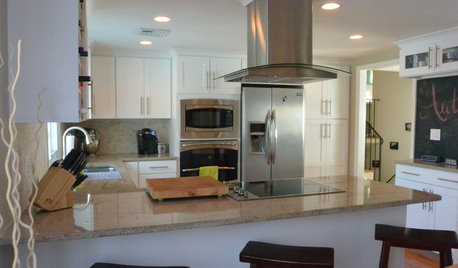


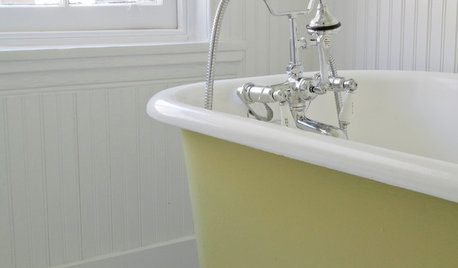


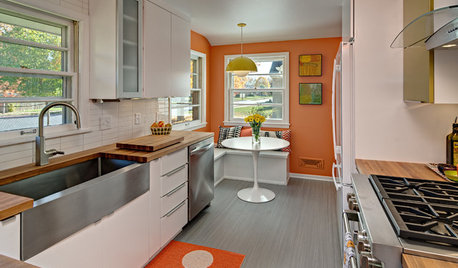
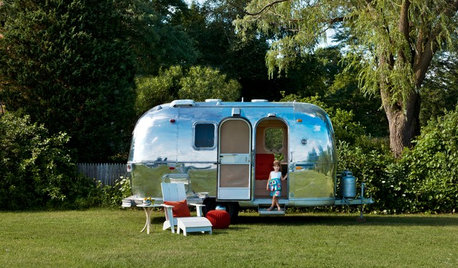
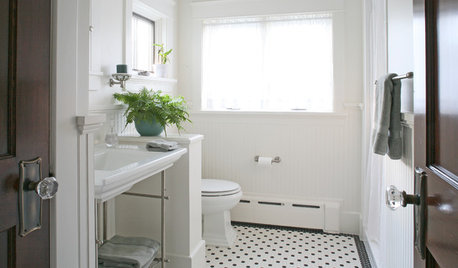
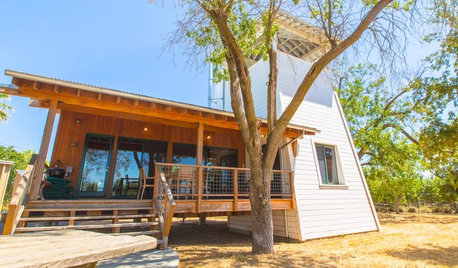






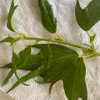
patrick_in_fb